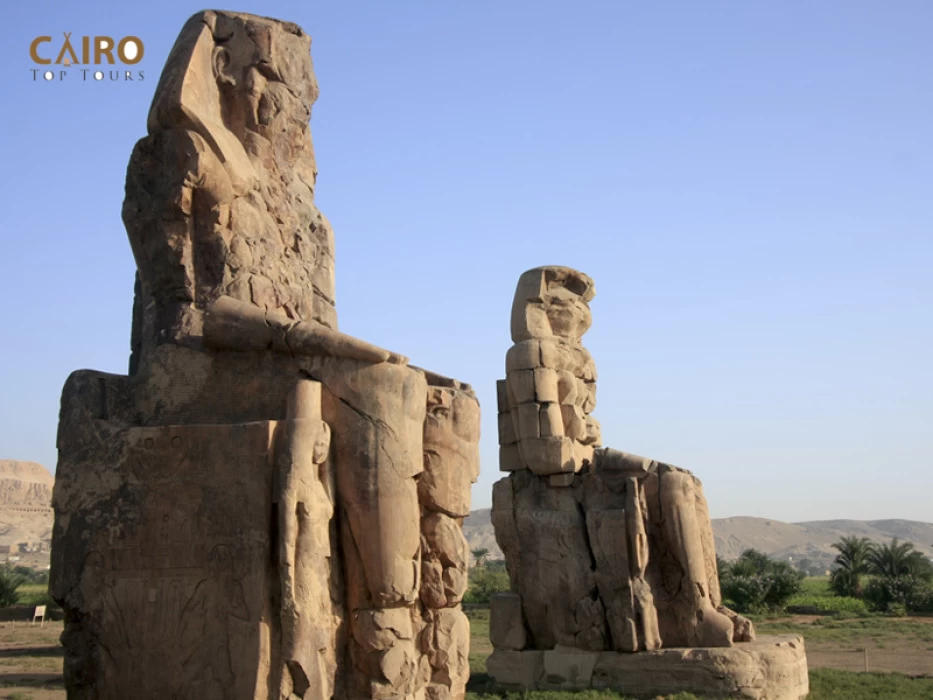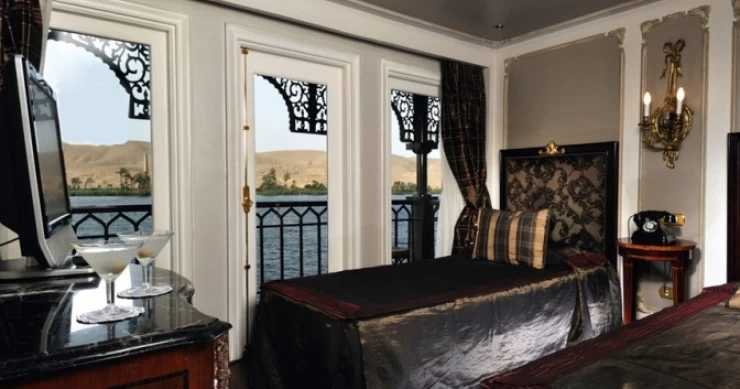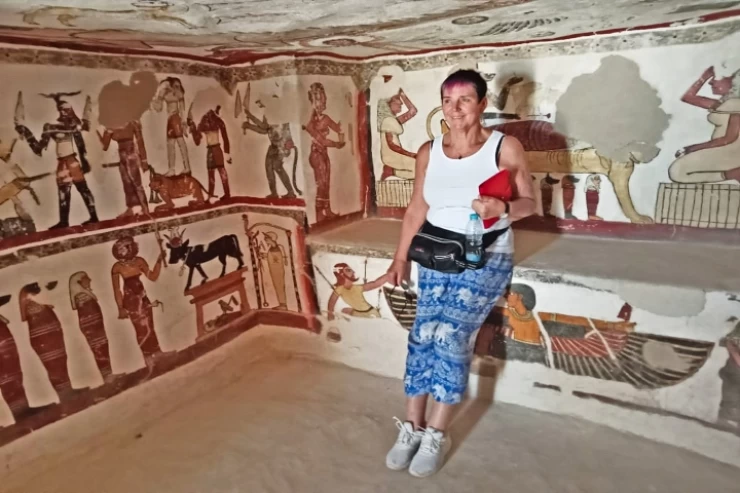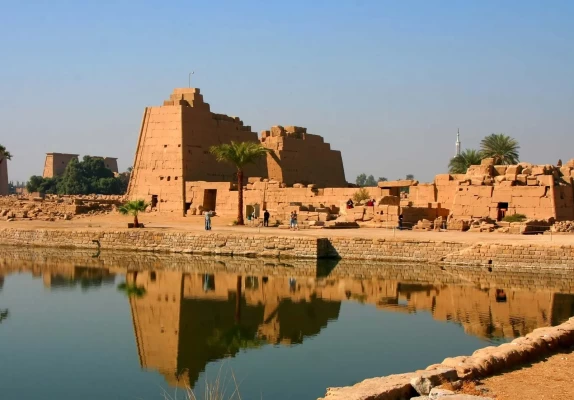
Colossi of Memnon
The Colossal Statues of Amenhotep III, located in Luxor, Egypt, are renowned as the Colossi of Memnon. These remarkable statues represent the Pharaoh Amenhotep III, who reigned during the 18th Dynasty and was often referred to as Amenhotep the Magnificent. His reign marked a period of unprecedented prosperity and artistic achievement in Egypt, elevating the kingdom to new heights of economic and cultural grandeur.
The Colossi of Memnon are situated in Luxor, where they stand as monumental representations of King Amenhotep III, depicted seated with his hands resting on his knees, gazing eastward towards the Nile River. Accompanying him are two smaller figures representing his wife, Queen Tiye, and his mother, Mutemwiya, positioned at the front of his throne. Additionally, a depiction of Hapi, the Nile god, is intricately carved into the side panels.
Constructed from massive blocks of quartzite sandstone sourced from the Red Mountain near Cairo, these statues were transported over a distance of 675 kilometers to Thebes, now known as Luxor. The weight of the stones posed significant challenges during transportation, and it is believed that later engineers utilized blocks quarried from Edfu in northern Aswan to restore the northern statue.
Although the two colossal statues are in a state of disrepair, they remain an essential attraction for visitors to Luxor, often included in various Egypt travel packages or day tours. A visit to these magnificent twin statues is highly recommended for anyone exploring the region.
While the statues exhibit a striking resemblance, they possess subtle differences in details and inscriptions. They were strategically placed to serve as guardians at the entrance of Amenhotep’s mortuary temple, which he constructed to facilitate worship both during his life and after his passing. The mortuary temple of Amenhotep III was once a grand structure, now largely in ruins.
The two statues exhibit a striking resemblance; however, they possess subtle differences in their details and inscriptions. They were strategically placed to serve as sentinels at the entrance of Amenhotep’s mortuary temple, which the Pharaoh commissioned for worship both during his life and after his passing. The mortuary temple of Amenhotep III was renowned for being the largest and most expansive of its era, surpassing even the Karnak Temple, covering an impressive area of 35 hectares (86 acres).
Luxor, a city of significant historical importance in Egypt, boasts a wealth of Pharaonic monuments that reflect the grandeur of ancient Egyptian civilization from millennia ago. Among these historical treasures are the two statues of gratitude. A visit to Egypt will allow you to explore their remarkable features firsthand.
For those interested in Howard Carter's House, the discoverer of King Tutankhamun's tomb, a visit to this site offers a glimpse into life in ancient Egypt and an appreciation for its remarkable legacy.
The two statues are remarkably similar in appearance, yet they are distinguished by minor details and inscriptions. Positioned at this location, they serve as protectors of the entrance to Amenhotep’s mortuary temple, which the Pharaoh built for the purpose of worship both during his lifetime and after his death. The mortuary temple of Amenhotep III was celebrated as the largest and most extensive of its time, even outshining the Karnak Temple, with a total area of 35 hectares (86 acres).
Luxor, one of Egypt's key tourist destinations, is home to numerous Pharaonic monuments that are emblematic of the ancient Egyptian civilization that thrived thousands of years ago. Among these monuments are the two statues of gratitude. A journey to Egypt will allow you to witness their distinctive features in person.
If you are curious about Howard Carter's House, the individual responsible for the discovery of King Tutankhamun's tomb, visiting this location will provide insight into the experience of living in ancient Egypt and the magnificence of that era.


















